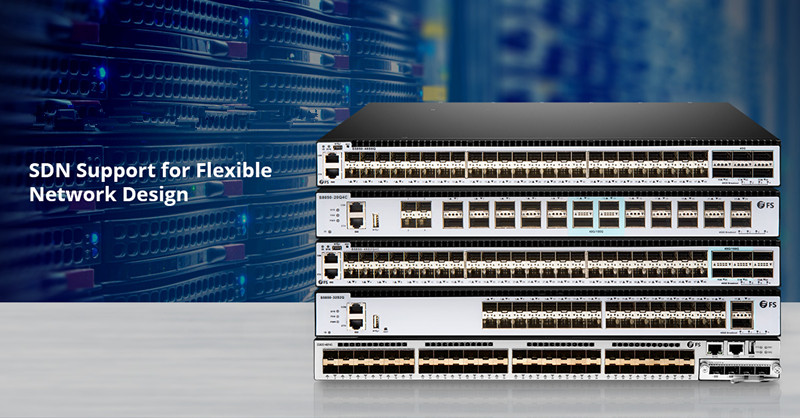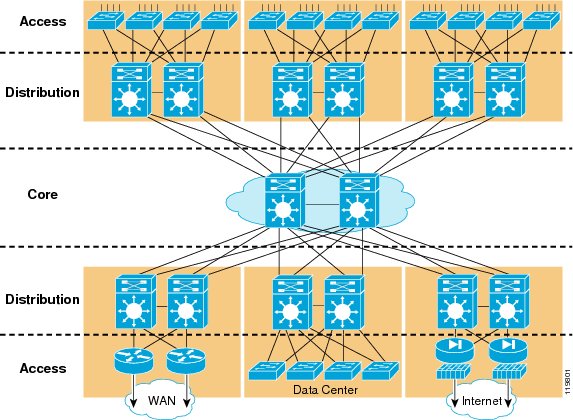Are You Ready to Upgrade Your Campus LAN switches?
As the corporate data center network undergoes transformation with technologies, the focal point of change is currently centered in the user-facing campus network. The campus network architecture is evolving in response to a combination of new business requirements, technology changes and a growing set of end user expectations. Consequently, campus LAN switches become a critical role in the networking, providing end-to-end connectivity within the organization. So this article will introduce the basics of campus network and considerations for choosing campus LAN switches.

Campus Network
Campus network is also known as campus area network or corporate area network (CAN), which is made up of an interconnection of local area networks (LANs) within a limited geographical area. Normally, campus networks are interconnected with high speed Ethernet links by means of optical fiber media, taking advantage of Gigabit Ethernet or 10-Gigabit Ethernet technology. Therefore, it is the important portion of the enterprise network infrastructure that provides access to network communication services and resources to end users and devices.
Campus Area Network Design: The Three-tier Model
Designing a network can be a challenging task. To design reliable and scalable networks, network designers must consider the overall integration of the network. Early networks were essentially large flat networks that enabled peer-to-peer communication at layer 2 using Media Access Control (MAC) addressing and protocols. Over the years, this basic layered architecture has been further codified into a commonly deployed three-tier network design.
A typical hierarchical campus network design includes the following three layers:

Core layer: The individual building blocks are interconnected using a core layer, so the core serves as the backbone for the network. The core needs to be fast and extremely resilient, because every building block depends on it for connectivity.
Distribution layer: The distribution layer aggregates nodes from the access layer, protecting the core from high-density peering. Additionally, the distribution layer provides policy-based connectivity and boundary control between the access and core layers. Load balancing, Quality of Service (QoS) and ease of provisioning are key considerations for the distribution layer.
Access layer: The access layer is the first point of access to the network for edge devices, end stations and IP phones. The switches in the access layer are connected to two separate distribution layer switches for redundancy.
Considerations for Choosing Campus LAN Switches
Choosing the right campus LAN switch for your organization isn't a simple matter, not just considering whether your network would benefit from access, distribution and core switches. There are a lot of features and capabilities about switches you should consider.
Port speeds and interface connections
First, you should understand what port speeds your network requires and what port connection types would be most useful and cost-effective. Now, most modern campus LAN switches support a wide variety of port speeds, including 1GbE, 10 GbE, 40 GbE and 100 GbE Ethernet. Most end devices use standard Gigabit Ethernet connections, while servers and uplink ports may require much faster port speeds and multiple ports for redundancy. In terms of interface connections, the most common options are copper, fiber and direct attach copper. It depends on the required port speed and what type of cabling is already installed in a building or throughout a campus.
PoE
Up till now, many devices that connect to access switches can be powered using a Power over Ethernet interface. It is widely used because PoE uses the same copper cabling to provide both network connectivity and the necessary power. But there are several different PoE standards and each standard provides a different maximum per-port watt output. Therefore, it's important to know how much power your end devices actually require.
Performance
Switching performance also depends heavily on whether the switch will be operating at Layer 2, Layer 3 or both. And if the switch will be performing Layer 3 functions, it must be able to support the routing protocol that will be used. Almost all enterprise-grade multilayer switches can operate using static routes or open dynamic routing protocols. But if you need to run more advanced routing protocols, you must ensure the switch you choose can run the necessary routing protocols.
Redundancy
Typical campus LAN network designs call for a certain amount of built-in redundancy to maintain connectivity to the majority of users when a link or switch goes down. In fact, there are a number of ways to provide redundancy using both hardware and software. This includes redundant switches, uplinks and redundancy protocols running at Layer 2 or Layer 3. It's important to understand what redundancy techniques you want to use, and verify that all of the necessary switches can perform the required redundancy tasks.
Summary
From what we have discussed, there are many considerations for choosing campus LAN switches. Except for understanding which type of switch is needed: access switches, distribution switches or core switches. It's imperative to determine network requirements, such as port speeds, port connection types, performance and redundancy etc. If you have any need for any types of switches, you can take FS.COM into your consideration. For more information, welcome to visit www.fs.com.